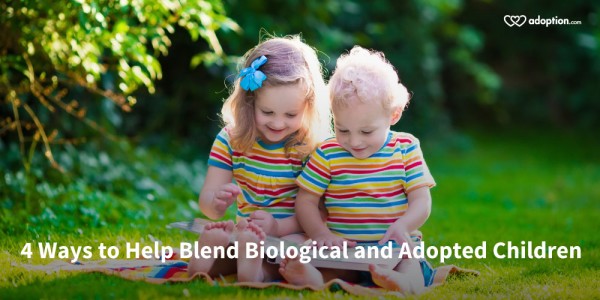Some adoptive parents choose adoption only after struggling with infertility and realizing adoption is the best method to create their family. Others, however, choose adoption in addition to having biological children. In all cases, adoptive parents will tell you that they have felt “called” to adopt. And so those who choose adopted and biological children are faced with the unique challenge of blending.
I’m an adoptive mother of one son; we also have four biological children. For my husband and myself, we never really felt a struggle in blending. We attribute the ease to the following factors:
- Parental Attitude: Of course we, as parents, are aware of which of our children are adopted and which are biological. But for many of us, we’re used to our family just as it is—and just like speaking, walking or muscle memory, we don’t give it conscious thought. Our attitudes, as parents, bleed over into our children. They mimic not only our behavior, but also our conversation and our attitudes. When we “forget” who is adopted and who is biological, our children do too.
- Expectations: The best sermon I ever watched on blending biological and adopted children was in a very large family. About half are adopted and half biological. As I observed the family, I saw that some have obvious disabilities, others don’t. Yet in this family where the children are home-schooled, the parents had the same expectations of everyone. Each was required to complete that day’s assignments. One little girl was missing fingers, yet she was still expected to write; one little boy didn’t yet speak English fluently, yet he was required to study. And the most enlightening and encouraging thing I saw was the children helping each other. You see, they all had expectations to live up to, but they each had unique challenges. Each of them wanted the others to succeed.
- Love Language: Even in a completely biological family, love language may differ. Most certainly, with adopted children, how they express and feel love will vary. Take time to learn your children’s love languages. Teach the children to learn about the others and to express love in a way their sibling will really feel it. Help your children to understand that we’re not all the same. Help them give and receive with the other person at the forefront of their hearts.
- Acceptance: In addition to accepting that individual personalities have varied love-languages, help your children to accept each other completely. This means temperaments, physical differences, strengths and weaknesses, talents, abilities, and disabilities. When children are accepted and loved completely by their parents, they will be by their siblings as well.
It was the day after a neighborhood summer party that I realized I was really the adoptive mom I had hoped to be. We had moved to the area just weeks earlier and were still getting to know people. At the gathering another adult approached me and mentioned that one of our children didn’t look like my husband—like the others did. I was so relieved that someone would finally think that one of our kids looked like me, and I told her so! I thanked her for being the one to make me so happy. The next day, I realized she was talking about our adopted son. I had assumed she was saying one of the kids looked like me, when in fact, she was saying he didn’t look like any of us.
When we, as parents, think of our adopted and biological children simply as our children, the siblings will think the same. The blend will be natural, and typical sibling behavior will ensue.

